Having bought a miniature home rose in a store, flower growers expect to admire it for many years. But after a while, we have to solve the question: why do the leaves of indoor roses turn yellow and fall off?
To solve the problem, the probable causes of this phenomenon are determined, there are several of them:
- Unsuccessful transplant;
- Improper watering;
- Insufficient air humidity;
- Lack of light;
- Excess or lack of fertilizers;
- Drafts;
- Sunburn;
- Pests;
- Diseases.
All these reasons can lead to yellowing and falling leaves of a domestic rose.
Reason 1. Unsuccessful transplant
After purchase, you should not immediately replant an indoor rose - it needs time to adapt. The air in the living room is drier than in the store, and in winter the heating radiators are also turned on.
- The flower is placed on a southwest window or balcony and kept there for 5 - 7 days. If the plant looks healthy and there are no signs of illness, then you can start replanting.
- You need to replant the rose using the transshipment method so as not to damage the delicate roots. It is advisable not to destroy the lump of earth.
- For replanting, it is advisable to use the ready-made “Rose” mixture or universal soil with neutral acidity. Expanded clay 1 cm thick is poured as drainage.
- It is better to use a ceramic pot - it does not heat up in the sun, therefore, the roots will feel comfortable.
- After transplanting, it is recommended to keep the flower in a cool, shaded place for 1-2 days.
Reason 2. Improper watering
Yellowing in the middle of the leaf, along the veins of a domestic rose, often occurs due to drying out or waterlogging of the soil. Overdried soil and the appearance of a crust with cracks on the top layer are a clear sign of a lack of moisture.
- When the soil becomes waterlogged, watering is temporarily stopped and replaced by spraying. It is necessary to water the plant when the soil dries to a depth of 1-2 cm. Settled water is used for watering.
- The frequency of moisturizing depends on the time of year. In summer, roses require regular, abundant watering.
- Watering is gradually reduced after the end of flowering, bringing it to 1 time every 7 days during the winter months.
- In spring, watering is increased after a sufficient number of leaves have bloomed.
Reason 3. Insufficient air humidity
Miniature house roses need high air humidity.
- To do this, spray the plants with water from a spray bottle in the evening. Containers with water are placed between the pots. Water evaporating will create the necessary microclimate around the plants.
- Spraying is carried out with chilled boiled water.
- It is useful to give your plants a warm shower every week, with low water pressure.
- In hot weather, the plant can be sprayed in the morning and evening.
- In winter, the flower does not require spraying.
Reason 4. Rose leaves may turn yellow due to lack of light
For comfortable growth and successful flowering, indoor roses need to be in the sun for 5–6 hours. A west or southwest window is suitable for this. On southern windows, due to excess direct sunlight, rose buds quickly bloom and also quickly wither. North windows are not suitable due to lack of light.
- It is worth talking about problems with lighting when the foliage turns yellow on the shaded side.
- For uniform formation of the crown, the bush is turned to the light in different directions.
- In the spring-summer period, it is advisable to take the pot with a rose out onto the loggia or balcony, where the amount of light is sufficient for the harmonious growth of the flower.
- Even better, plant the flower in open ground or dig it into the ground along with the pot. There it will easily tolerate even exposure to direct sunlight.
Reason 5. Excess or lack of fertilizers
Yellowing of the leaves of an indoor rose can be caused by an excess or lack of fertilizer. The appearance of the foliage depends on the following elements.
Iron
Plants that receive sufficient iron levels grow strong and disease-resistant. Iron deficiency causes a disease called chlorosis. The leaves curl at the edges, turn yellow, and become smaller. First of all, young leaves suffer from iron deficiency, then yellowness spreads to adult leaves. Chlorosis is accompanied by slow growth of domestic roses and loss of green mass. Iron deficiency occurs more often in alkaline soils.
What to do: To restore acidity, use a fertilizer that acidifies the soil, for example, organic. If the acidity level is neutral, foliar fertilizing with Ferovit and Ferrilene is used.
Nitrogen
Roses experience nitrogen deficiency more often in the spring. Lack of nitrogen leads to paleness and yellowing of the foliage. The color change starts from the lower leaves and gradually moves upward. Meanwhile, the lower leaves fall off.
What to do: Nitrogen deficiency can be replenished by fertilizing with urea or universal fertilizer.
Manganese
With a lack of manganese, yellowing begins with old leaves. Yellowness appears between the veins, moving from the edge to the center of the leaf.A green border remains around the veins. This happens when an indoor rose is planted in alkaline soil. Either a lot of lime was added when planting the bush.
What to do: The situation will be corrected by adding a solution of manganese sulfate under the plant, deoxidizing the soil.
Magnesium
Magnesium deficiency occurs more often in plants growing in acidic soils. The deficiency of the element is reflected first on adult leaves, and then on young ones, in the form of discolored spots. Reddish-yellow spots appear between the veins. The edges of the leaves remain green, but leaf fall on the windowsill is inevitable.
What to do: the magnesium content is restored by adding magnesium sulfate and ash. If there is an excess of magnesium, potassium cannot be absorbed by plant roots. When applying fertilizers, adhere to the recommended dosage.
Reason 6. Rose leaves may turn yellow and fall off due to drafts
Drafts - the enemies of house plants - provoke yellowing and shedding of leaves.
If drafts are unavoidable, then you can make a paper or plastic screen to the height of the crop. It will protect the flower from drafts.
Reason 7. Sunburn of rose leaves
Sunburn leaves brown and yellow spots on the leaves. Damaged foliage dries out and falls off. Burns appear from excess direct sunlight or from spraying with cold water in the scorching sun.
You can avoid burns by moving the pot to a southwest or southeast window.
Reason 8. Pests of indoor plants
Pests on domestic roses also contribute to the appearance of yellow leaves and worsen the condition of the plant as a whole.
spider mite
The insect lives on the underside of the leaf, spreading a web along the shoots. The foliage turns yellow, dries, young shoots die.The reason for the appearance of spider mites is excessively dry and hot air in the room, a dense cluster of plants.
Fighting methods:
- It is necessary to lower the room temperature
- Increase air humidity
- Wash the rose bush from cobwebs with a solution of laundry soap
- Treat with Fitoverm or Vermitek solution. Treatment is carried out at least 2 times, with an interval of 10 days.
- It is advisable to isolate the diseased plant from other plantings.
- The soil is also treated with insecticides.
- Prevention against mites - frequent spraying of roses.
Rose leafhopper
The adult and larvae of the pest live on the underside of the leaf blade. As a result of the life activity of the rose leafhopper, pale spots appear on the foliage. The leaves turn yellow, curl and fall off, and the development of the rose slows down. The reproduction of the rose leafhopper is promoted by heat and dry air.
Fighting methods:
- At the initial stage, wash the plant with soapy water on all sides.
- In case of severe damage, the rose is treated with solutions of insecticides, for example Aktara or Fitoverma.
- To enhance the effect of the drugs, add a tablespoon of alcohol per liter of solution.
Thrips
When affected by microscopic thrips, the leaves become yellowish and have a silvery coating and are deformed. Infection is favored by elevated temperatures and dry air.
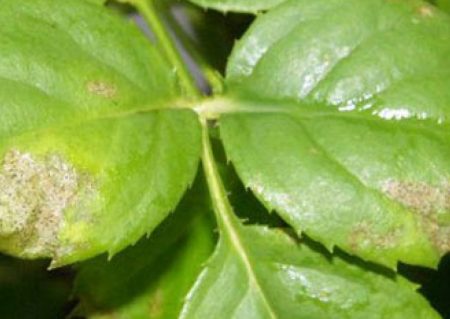
Thrips on rose leaves.
Fighting methods:
- It is necessary to ensure high air humidity
- Before spraying a plant with an insecticide solution, isolate it from other plants.
- The soil and the place where the flower stood are also treated.
Reason 9. Indoor rose diseases
Unfavorable conditions and improper care provoke diseases. Regular inspection of plants will help prevent their occurrence.
Powdery mildew
The cause of a fungal disease such as powdery mildew is too wet soil, lack of fresh air, excess fertilizer or heat.
Signs of the disease include yellowing, curling and falling leaves.
Fighting methods:
- Be sure to remove diseased shoots, leaves, buds
- Treat the entire bush with a fungicide solution.
Black spot
Black spot is an infectious disease. Signs of the disease: yellowing of the green mass, formation of dark spots with jagged edges. A diseased rose does not tolerate winter well, grows more slowly and blooms little.
Fighting methods:
- Any systemic fungicide will help defeat the disease.
Knowing why indoor rose leaves turn yellow and fall off, you can prevent many problems.
A few more necessary rules for caring for mini roses:
- Flowers need access to fresh air.
- From October to February, indoor roses need rest.
- After flowering ends, reduce watering.
- Shoots are shortened to 10 centimeters.
- Roses are transferred to a cool room.
- In spring, rested bushes will begin to actively produce new shoots and form buds.
- Roses are pruned twice a year: before wintering, during flowering.
- When pruning, the outer bud is left. A bud that is directed inside the bush does not form it correctly.
- When shortening shoots in the fall, 4-5 buds are left for each strong shoot, and 2 buds for each weak shoot.
- During summer pruning, faded flowers and yellow leaves are removed.
To activate the protective functions of indoor roses, to increase immunity, plants should be periodically treated with biostimulants: Epin, Zircon.
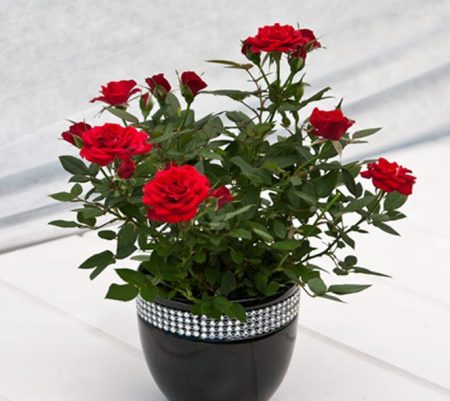
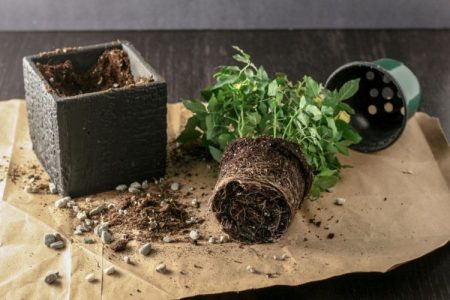
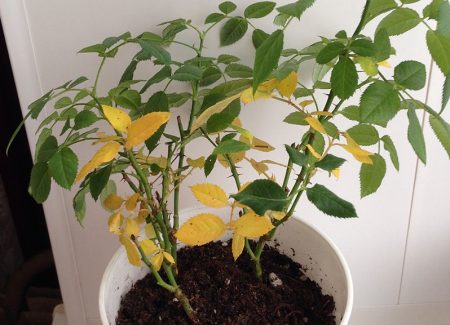

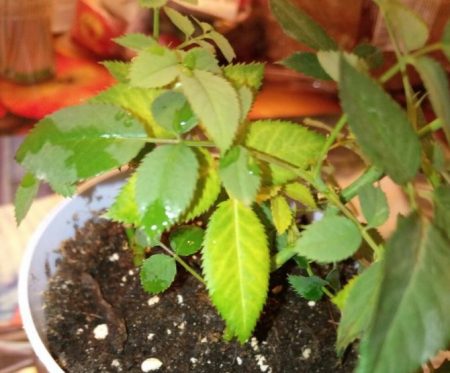
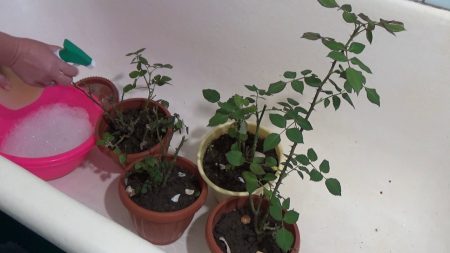
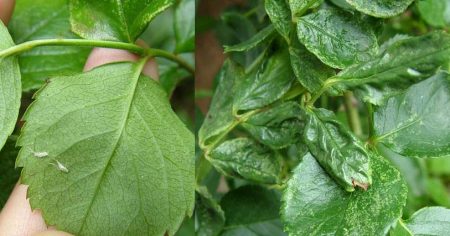
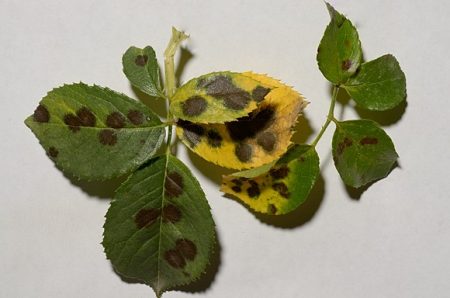

 (12 ratings, average: 4,83 out of 5)
(12 ratings, average: 4,83 out of 5) CUCUMBERS NEVER GET SICK, I'VE BEEN USING ONLY THIS FOR 40 YEARS! I SHARE A SECRET WITH YOU, CUCUMBERS ARE LIKE THE PICTURE!
CUCUMBERS NEVER GET SICK, I'VE BEEN USING ONLY THIS FOR 40 YEARS! I SHARE A SECRET WITH YOU, CUCUMBERS ARE LIKE THE PICTURE! You can dig a bucket of potatoes from each bush. Do you think these are fairy tales? Watch the video
You can dig a bucket of potatoes from each bush. Do you think these are fairy tales? Watch the video
 How our fellow gardeners work in Korea. There is a lot to learn and just fun to watch.
How our fellow gardeners work in Korea. There is a lot to learn and just fun to watch. Eye trainer. The author claims that with daily viewing, vision is restored. They don't charge money for views.
Eye trainer. The author claims that with daily viewing, vision is restored. They don't charge money for views. A 3-ingredient cake recipe in 30 minutes is better than Napoleon. Simple and very tasty.
A 3-ingredient cake recipe in 30 minutes is better than Napoleon. Simple and very tasty. Therapeutic exercises for cervical osteochondrosis. A complete set of exercises.
Therapeutic exercises for cervical osteochondrosis. A complete set of exercises. Which indoor plants match your zodiac sign?
Which indoor plants match your zodiac sign? What about them? Excursion to German dachas.
What about them? Excursion to German dachas.